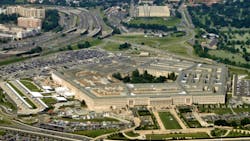Defense spending tops electronics’ distributors’ concerns
The sequester and looming budget cuts to military and defense spending held the attention of the Top 50 distributors this spring as they waited to see how deep the cuts would go. For some, the waiting game had yet to play out, while others said they’d already begun to feel the effects of shrinking budgets.
Avnet Electronics Marketing is already feeling a slowdown. Company president Ed Smith says that its defense sector sales were down by single digits as of March and that he expects a continued struggle in the market this year. Uncertainty is a large part of the problem, as defense contractors took a conservative approach to the market early in the year not knowing which particular programs or departments would be most affected by the sequester long-term.
A bright spot is the increased electronics in military equipment today, a trend that isn’t going away and ensures opportunity in the long run despite the pending cuts, Smith adds. Commercial avionics represents an even brighter opportunity under the current conditions, he says, as does the automotive market.
“All the fleets having to get younger has driven nice growth in aerospace,” Smith adds. “When I look at the industrials, I think they’re still pretty flat and not very exciting. And in the Americas we’re driven by that… but there are some glimmers of hope in automotive and aerospace.”
Allied Electronics’ president Scott McLendon says the defense budget cuts have had more of an impact on the industry than he expected and that he doesn’t see the situation improving any time soon.
He points to large and small contractors tied to federal and state government business for a wide range of projects as being particularly hard hit.
“Any customer that has any sort of tie to the federal, state, or local government is being dramatically affected. It’s not just the [Lockheed Martins] and Raytheons and companies like that. It’s also companies that build controls for water and waste water treatment plants, for example. With this first round of cuts, there are programs that have been cut, there are things that have been delayed. I originally didn’t think it would have as big an impact as it has,” he says of the sequester in particular. “And with the Congress we have in place right now, I don’t see it getting fixed. I think it’s going to be status quo.”
Michael Knight, senior vice president of the Americas at TTI Inc., holds a different view. He says it’s unsettling that no standout market or technology is driving industry growth this year, but that he’s pleasantly surprised by the strength of some industry segments—and defense is one of them.
“From my viewpoint, there’s really no standout—no barn-burner region, application, technology, or end market segment. It’s really more about pleasant surprises. I’m pleasantly surprised how well defense electronics is holding together, for example. And I’m pleasantly surprised how well the transportation market is holding together,” he says. “Distribution has a really nice market there these days.”
Mouser senior vice president of business operations Pete Shopp maintains a similar view, pointing to growth among small electronics manufacturing service (EMS) providers and OEMs serving the defense and aerospace sector. Defense budget cuts had not affected Mouser as of mid-March, he says, but he doesn’t rule out a slowdown at some point this year.
“We’re still seeing a lot of growth in RF communications, industrial, and in the aerospace/defense markets,” Shopp explains. “The budget cuts to defense are not affecting us so far. There’s still design work going on. But small manufacturers will eventually have to slow down.”
About the Author
Victoria Fraza Kickham
Distribution Editor
Victoria Kickham is the distribution editor for Electronic Design magazine, SourceESB and GlobalPurchasing.com, where she covers issues related to the electronics supply chain. Victoria started out as a general assignment reporter for several Boston-area newspapers before joining Industrial Distribution magazine, where she spent 14 years covering industrial markets. She served as ID’s managing editor from 2000 to 2010. Victoria has a bachelor’s degree in English from the University of New Hampshire and a master’s degree in English from Northeastern University.








